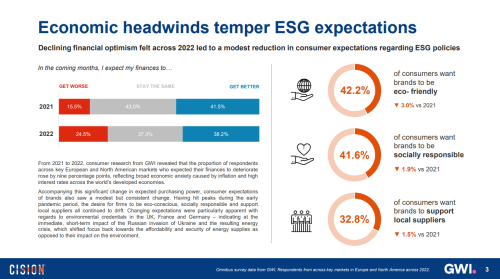Do investors get a straight story about company earnings? It is acknowledged that over the past two decades the traditional way of measuring profits, by generally accepted accounting principles (GAAP), has been increasingly overshadowed by other metrics in analyst forecasts, company press releases, and clearinghouses that provide data on predicted and actual earnings.
Even though these alternatives, known collectively as Street earnings, incorporate non-GAAP measures, they have been touted as providing a better picture of company financials, and today about 90 percent of S&P 500 companies use at least one non-GAAP measure in earnings releases.
But this view of Street earnings has hardly gone uncontested. Among scholars and investors alike there have been outspoken doubters, among them Berkshire Hathaway’s Charles Munger, who once referred to one of the most widely used non-GAAP measures, EBITDA (earnings before interest, taxes, depreciation, and amortization), as ‘bullshit earnings’.
Now some new research will add appreciably to these doubts. A study being presented on August 7 at the annual meeting of the American Accounting Association implicates the use of Street earnings in a striking recent development that the research brings to light – namely, the proliferation of large earnings surprises whereby quarterly earnings per share exceed analysts’ forecasts not by just a penny or two but by much more.
Assisting this has been the ability to manipulate non-GAAP numbers – for example, by asymmetrically including transitory items that increase firms’ earnings and excluding transitory items that lower them.
So striking has this trend been that the authors of this new study, Paul Griffin of University of California at Davis and David Lont of University of Otago in Dunedin, New Zealand, believe it calls recent market results into question.
‘There are those,’ they write, ‘who might claim that so far this century the US economy has experienced such an unusual period of economic growth that it has taken…analysts and investors increasingly by surprise each quarter with better-than-expected earnings performance for almost two decades. This view strains credulity.’
Analyzing surprises in Street quarterly earnings among the S&P 500 over a 17-year period, the professors find a doubling in the proportion of reported earnings that were between five to 15 cents per share above analyst forecasts, results in this range increasing from about 12.1 percent of all earnings surprises in 2000 to about 25.5 percent in 2016.
At the same time, there was a precipitous decline in the proportion of Street earnings reports that barely met analysts’ predictions: thus, between the two periods 2000-2008 and 2009-2016, the average proportion of positive earnings surprises that were squeezed between zero and a penny dropped by about 15 percent and the proportion between a penny and two cents fell by about 5 percent.
In marked contrast, the pattern of quarterly earnings surprises as measured by GAAP was much more stable over the same 17 years.
For example, among the S&P 500, GAAP earnings results that were 5 to 15 cents per share above expectations represented about 10 percent of earnings surprises in the two years 2000-2001 and about the same percentage in 2015-2016.
In essence, the growing use of Street measures employing non-GAAP numbers has potentially made earnings manipulation something of a new ballgame.
‘It used to be,’ Griffin and Lont write, ‘that a significant number of firms reported earnings that either met or just exceeded Street expectations, suggesting that, to accomplish this result, managers would either make small late changes to pre-managed earnings or that analysts would intentionally under-forecast reported earnings by similar amounts…This behavior has mostly died out. If firms no longer report earnings just to meet or exceed Street forecasts, then what do they do now?’
The professors’ answer: Management’s earnings manipulation ‘must be of a different form and, possibly, one more acceptable to shareholders’ agents such as auditors, directors, and regulators. Non-GAAP earnings management is one such form. If these monitors [are] focused on small changes around zero earnings surprises…we would expect to observe fewer small positive earnings surprises…and more large earnings surprises.’
In other words, if the monitors are intent on guarding against penny-ante manipulation, as they traditionally have been, it makes sense for managers to up the ante, particularly when doing so not only brings handsome rewards but is much facilitated by growing acceptance of non-GAAP numbers.
Stock analysts are also likely contributors to this trend, the authors suspect. As they explain, analysts may ‘increasingly bias their Street expectations downwards to generate a more positive response [from earnings surprises] for their clients – that is, they engage in strategic pessimism. This reason has merit if the reporting firms reward analysts with more business or more access to the firm information as a result of helping firms create a positive earnings surprise…The participation of firm managers in guiding [analysts] to a majority view of Street earnings could further amplify these effects.’
Clearinghouse complicity
Although the researchers find that analyst forecast accuracy has not significantly declined over the 17 years covered by the study, they note that an improvement in accuracy achieved in prior years has come to a halt.
Complicit, too, Griffin and Lont believe, are clearinghouses that compile analysts’ forecasts and company earnings.
Focusing on a leading clearinghouse, the Institutional Brokers’ Estimate System (I/B/E/S), and noting that its earnings numbers are based on those of contributing analysts, the professors ask: ‘What if the extant market reactions to positive Street earnings surprises were to induce [contributing] I/B/E/S analysts to produce even higher Street earnings surprises in search of generating an even stronger stock market response?’
This is an important question, they continue, ‘because I/B/E/S performance metrics are deeply embedded in market pricing behavior as credible and high-quality information for investors.’
And they warn: ‘Should I/B/E/S’s (and analysts’) efforts to generate increasingly positive Street earnings surprises with non-GAAP adjustments continue, this [trend] could undermine its reputation as a source of high-quality market information.’
The study’s findings are based on analysis of hundreds of thousands of quarterly earnings forecasts and reports involving more than 4,700 companies.
While the trend toward heightened earnings surprises is seen across the entire sample, it is most pronounced among the S&P 500, a finding that the authors find ‘disquieting…given their focus on strong corporate governance practices and accounting controls…Apparently S&P 500 firms are driven by a stronger need to generate earnings surprises than are other firms.’
As to how regulators should respond to the trends uncovered by the study, Griffin notes that, although the SEC has expressed concern about the growth of non-GAAP metrics, it has only brought one action over improper company use of them.
‘The issue has been very much on the back burner,’ he says. ‘Given our findings, maybe it’s time to move it from there.’










